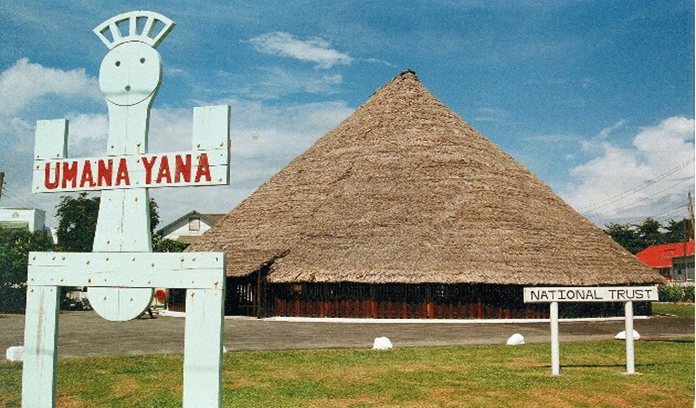A total of 19 parties will today submit lists of candidates to contest the March 02 polls, seen as historic because the party that wins these elections will jumpstart plans for an economic transformation of this country from oil revenues.
Nominations are being submitted at the iconic 55-feet Umana Yana; political parties will submit their lists of candidates to the Guyana Elections Commission (GECOM), formally starting the process towards elections.
In exactly 52 days, some 661,378 electors from across the 10 administrative regions can make their way to one of the 2,351 identified polling stations to elect their political leaders in two elections – general and regional.
But before that is done, contesting political parties will need to satisfy legal requirements to contest the elections.
Today, parties must submit three separate lists if they are contesting both the general and regional elections.
Election of the 65 Parliamentarians are drawn from two lists – the National Top-Up List and the 10 Geographic Constituency lists.
A total of 40 Parliamentary seats can be drawn from the National Top Up list. How are these seats allocated? After the elections are over, the total number of valid votes cast are divided into 40 and parties are allocated seats according to who has the greatest number of votes.
A total of 25 Parliamentary seats can be drawn from the Geographic Constituency lists. How are these seats allocated? After the elections are over, the total number of valid votes cast in EACH REGION are divided into 25 and the parties are allocated seats according to who has the greatest number of votes. So, for example, in Region Four, seven seats are available. If there are 40,000 valid votes in THAT Region, one seat will be equal to 5, 714 votes. If one party wins 25, 000 of the votes, that party would be entitled to four seats. Parties have to submit lists of candidates for each region.
A separate list then has to be submitted of candidates who are seeking election to the country’s ten Regional Democratic Councils (RDCs). Most RDCs are made up of 35 seats. So to determine the number of seats for each party, the total valid votes cast in EACH REGION are divided into 35 and seats are allocated according to which party has the greatest number of votes. Parties have to submit lists of candidates for each region.
Parties must submit lists for at least six regions if they want to get into Parliament; also, parties can choose only to contest seats on the Regional Democratic Councils and not to get into Parliament.
The lists must be accompanied by a Statutory Declaration of each person named as a candidate, attested to by Justice of the Peace (JP), Commissioner of Oaths, notary public or other persons authorized by law to administer an oath in the place where the declaration is made.
In the lead-up to the submission of their lists at the conical palm-thatched benab in Georgetown, some parties will stage a traditional march from a neighbouring assembly point.
Significantly, the candidates declare they are qualified to be nominated, which includes meeting the constitutional requirement of being a citizen of Guyana only; in the last elections, seven persons, including three government ministers, made a sworn declaration but it was later learnt that they held dual citizenship.
Candidates and supporters of the incumbent A Partnership for National Unity + Alliance for Change (APNU+AFC) coalition are expected to rendezvous at Parade Ground, some fifteen minutes away from Umana Yana; while the People’s Progressive Party (PPP) will brave the midday sun from its Robb St. headquarters.
The marching delegations are expected to be garbed in the colours of their party – red for the PPP and green and yellow for the APNU+AFC – and is traditionally treated to musical renditions which they gyrate to along the roads which are closed to traffic for that period.
The APNU+AFC and the PPP are the two largest political parties in Guyana. The former was defeated by a PPP-piloted no-confidence motion in the National Assembly in 2018, which triggered these elections.
Some political newcomers, such as A New and United Guyana (ANUG) – which has since coalesced with the Federal United Party (FED-UP) – and The New Movement have been camping out at the Umana Yana in order to get in line early since GECOM has announced that the submission of lists will be on a “first come first serve basis”.
Some of the smaller parties are not expected to stage a march since many of them have been struggling to pull numbers since their launch.
Historically, the number of parties expressing interest is reduced after Nomination Day either due to a no-show, or constitutional barriers.
At the venue, parties will begin submitting their lists of candidates to GECOM’s Chief Elections Officer (CEO) Keith Lowenfield from 1:00pm until 5:00pm, after which nominations will be closed.
Presidential Candidate of the APNU+AFC, President David Granger will head the list for the coalition; while PPP General Secretary and Opposition Leader Bharrat Jagdeo has confirmed that he will lead his party which suffered a devastating defeat at the 2015 elections, after serving 23 years in office.
Part II (3) of the Representation of the People Act stipulates that the list must comprise “not less than 53 nor more than 65 persons who are qualified to be elected to the National Assembly.”
There have also been hints at some changes in some lists, with News-Talk Radio Guyana/Demerara Waves Online News confirming that APNU+AFC’s Agriculture Minister Noel Holder will be making his departure from politics after a one-term stint.
For the PPP, sources have indicated that political novice Susan Rodrigues who has been making public appearances for the party is expected to make that list, along with the party’s Prime Ministerial candidate, Brigadier (rt’d) Mark Phillips and University lecturer Hugh Todd.
Upon submission of the lists, GECOM will begin to examine their validity in keeping with constitutional stipulations, after which the parties will be informed of their eligibility. Should a list fail that test, the political party will be notified and given at least one day to correct and resubmit it.
Once this is completed, the election campaign will continue with countrywide rallies and public meetings geared towards galvanizing support and (re)motivating targeted segments of society to exercise their franchise.
In December, the United States (US) Congressional Research Service (CRS), a think-tank for the US Congress, indicated that some analysts are of the belief that the APNU+AFC coalition is “likely” to win at the 2020 polls.
“Past general elections in Guyana suggest the 2020 race will be close, but some analysts contend the APNU/AFC’s multiparty and cross-ethnic coalition is likely to sustain the Granger government in power,” the CRS said in its December 6, 2019 edition.
Prior to this, US State Department Advisor on Latin America and Caribbean Affairs, Dr. Evan Ellis predicted that the PPP would win the next elections.
These elections are being described by political analysts as the “mother of all elections,” given that it will be hosted just two months after Guyana officially became an oil-producing nation – a feat which has sent hopes for a better life, and concerns about management, skyrocketing.













